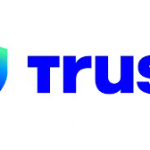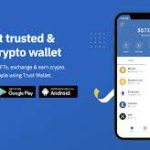Does Trust Wallet Have 2FA? A Comprehensive Analysis
## Introduction: Understanding the Importance of Security in Cryptocurrency
In the realm of cryptocurrencies, where digital assets can hold significant value, security is paramount. As more individuals embrace cryptocurrencies as both a form of investment and a medium of exchange, the need for robust security measures has never been more pressing. One such measure that has gained traction in the digital security landscape is Two-Factor Authentication (2FA). This article delves into whether Trust Wallet, one of the premier mobile wallet applications for cryptocurrencies, incorporates 2FA and the implications of its absence or presence.
## What is Trust Wallet?
Trust Wallet is a decentralized mobile wallet that provides users the ability to manage a wide array of cryptocurrencies and tokens, all while maintaining complete control over their private keys. This wallet, which was acquired by Binance in 2018, allows users to store, send, and receive cryptocurrencies such as Bitcoin, Ethereum, and various ERC-20 tokens with ease. What sets Trust Wallet apart is its user-friendly interface and enhanced privacy features, giving users a seamless experience in managing their digital assets.
## The Role of Two-Factor Authentication (2FA)
Two-Factor Authentication (2FA) is a vital security protocol that adds an extra layer of protection to user accounts by requiring two forms of verification before granting access. Typically, this involves something the user knows (like a password) and something the user has (like a mobile device for a one-time code). In an era where cyber threats are increasingly sophisticated, 2FA can significantly reduce the risk of unauthorized access by ensuring that even if a password is compromised, a hacker would still need the second form of verification to gain entry.
## Does Trust Wallet Support 2FA?
As of the time of this writing, Trust Wallet does not natively support Two-Factor Authentication (2FA). Unlike many centralized exchanges and platforms that offer 2FA to enhance account security, Trust Wallet operates in a decentralized manner, meaning that it does not store user accounts on a centralized server. This design choice, while offering enhanced privacy and control to users, leads to the absence of standard security features like 2FA. The wallet itself focuses on security measures such as private key management and biometric authentication for mobile devices.
### The Implications of Lack of 2FA
The absence of 2FA in Trust Wallet can have several implications for users. While the decentralized nature of Trust Wallet offers great benefits, such as the inability for third parties to access users’ funds or transaction data, it also means that responsibility for security lies heavily with the user. Let’s explore some of the consequences:
1. **Increased Responsibility for Users:** Users must take full responsibility for securing their recovery phrases and private keys. Without 2FA, there’s no additional layer of security, making it crucial for users to use long and complex passwords and store their recovery phrases safely.
2. **Risk of Convenience versus Security:** Many users may prefer the convenience that Trust Wallet offers without multiple layers of security, but this can come at a cost if a user’s device is stolen or compromised. Users must balance convenience with the security risks involved.
3. **Potential for Social Engineering Attacks:** Without 2FA, users become more vulnerable to phishing scams and other social engineering tactics. If a user unwittingly provides their recovery phrase or password to a malicious actor, that individual could gain complete access to the wallet.
## Alternative Security Measures in Trust Wallet
Although Trust Wallet does not offer 2FA, it incorporates several robust security features to protect users’ assets:
### 1. **Private Key Control**
One of the most significant advantages of using Trust Wallet is that users retain complete control over their private keys. Unlike centralized platforms that hold user credentials on their servers, Trust Wallet stores private keys directly on the user’s device, ensuring that only the user has access. This fundamental aspect of decentralization promotes greater security but requires strict user diligence.
### 2. **Biometric Authentication**
For mobile users, Trust Wallet supports biometric authentication methods, such as fingerprint or facial recognition. This feature adds a layer of security, making unauthorized access to the wallet significantly more difficult. However, it’s important to remember that biometric methods do not replace the need for strong passwords or safeguard the wallet from malware.
### 3. **Secure Recovery Process**
Trust Wallet emphasizes the importance of the recovery phrase when setting up a wallet. This 12-word (or sometimes 24-word) mnemonic phrase serves as a backup that allows users to recover their wallets in the event of device loss or failure. Trust Wallet instructs users to store this phrase securely, as anyone with access to it can control the assets within the wallet.
### 4. **Regular Software Updates**
Trust Wallet develops and issues regular updates to address potential vulnerabilities and enhance user security. Keeping the application updated ensures that users are protected against the latest threats and exploits.
## Best Practices for Securing Your Trust Wallet
While Trust Wallet provides several security features, users must adopt best practices to enhance their wallet security:
### 1. **Use Strong Passwords**
Creating a strong, unique password for your Trust Wallet can serve as a rich line of defense against unauthorized access. Avoid using common phrases or easily guessable information.
### 2. **Enable Device Security Features**
Utilizing built-in security features on your mobile device, such as screen locks and biometric security options, can prevent unauthorized access to your wallet application.
### 3. **Back Up Your Recovery Phrase**
Store your recovery phrase in a safe place, ideally offline, to prevent theft or accidental losses. Avoid storing this information digitally where it can be more susceptible to hacking or phishing attempts.
### 4. **Be Aware of Phishing Scams**
Stay vigilant against phishing attacks. Always verify the authenticity of websites, emails, and messages that request sensitive information related to your wallet.
### 5. **Avoid Public Wi-Fi**
Conducting cryptocurrency transactions over public Wi-Fi networks can expose you to potential security threats. Use secure connections or mobile data wherever possible.
## Community Perception and Feedback on 2FA Absence
In the cryptocurrency community, the absence of 2FA in Trust Wallet has generated mixed reactions. Some users appreciate the decentralized approach and understand the reasons behind the lack of 2FA. They point out that as long as users adhere to best security practices and fully grasp the implications of managing their wallets without 2FA, they feel confident in using Trust Wallet as a storage solution.
Conversely, others express concern over the risks involved, particularly for newcomers less familiar with the nuances of cryptocurrency security. Many believe that incorporating optional 2FA could empower these users, providing an additional layer of protection against common security threats.
## Conclusion: Balancing Security and Usability in Cryptocurrency Wallets

In conclusion, the question of whether Trust Wallet has 2FA reveals valuable insights into the balance that must exist between user convenience and security within the cryptocurrency space. While Trust Wallet does not support Two-Factor Authentication, it provides other security measures that are consistent with its decentralized philosophy. Ultimately, it is essential for users to take an active role in their security by understanding the risks involved and implementing best practices.
As the cryptocurrency landscape continues to evolve and new security technologies emerge, it will be interesting to see how wallets like Trust Wallet adapt while maintaining their core philosophies. For now, users must remain informed and proactive in protecting their digital assets, making the most of the tools and knowledge available to them.


